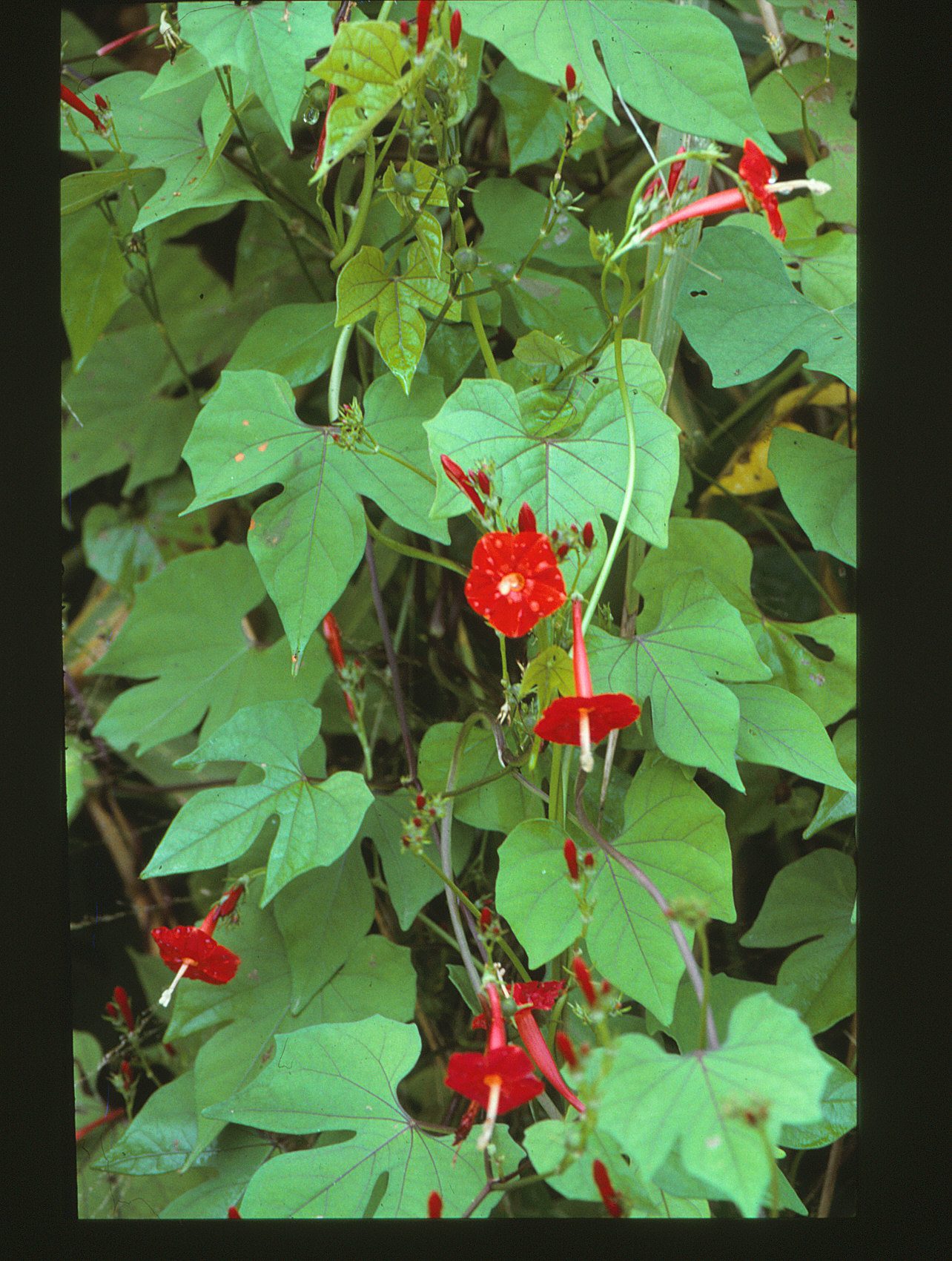Red convolvulus
Ipomoea hederifolia, Fam. Convolvulaceae

Annual twiner; glabrous except for patches of short hairs in leaf axils, usually very vigorous and climbing all over other plants including canopy of trees and/or trailing across the ground. Previously Ipomoea angulata.
| Weed Category: |
Other invasive plants Invasive plants that are not prohibited or restricted invasive plants, but are known to spread readily and cause negative impacts, within the region.
|
| Weed: | Yes |
| Form or habit: | Vine (Climbing, Twining or groundcover) |
| Family: | Convolvulaceae |
| Leaf: | Simple Alternate Alternate simple. Ovate to orbicular in outline, 30-150 x 30-150mm, heart shaped base with elongated tip, margins entire, angular, coarsely toothed or obscurely to deeply 3-lobed, middle lobe narrowed towards base; stalks 20-170mm long. |
| Flower conspicuous: | Conspicuous |
| Flower colour: |
Yellow, Red |
| Flower description: | Funnel-shaped with 5 shallow lobes. Scarlet with yellow throat, 15-25mm across, tube 20-40mm long with protruding pale stamens and styles; borne in few to several flowered groups on 30-220mm long stems. |
| Fruit conspicuous: | Conspicuous |
| Fruit colour: |
Brown |
| Fruit: | Dry |
| Fruit description: | Brown, globular capsules, 5-7mm, with bristle-like narrow calyx lobes, glabrous. Minutely hairy blackish seeds, 3-5mm long. |
| Habitat: | |
| Distribution | |
| Food source for: | |
| Toxicity: | No toxicity known |
| Origin: | Tropical America |
| Notes: | Spread by: vegetative material and/or seeds in garden waste, water, contaminated soil on machinery, vehicles etc; contaminated pasture seeds and contaminated forest mulch. Invades/threats: Agriculture, particularly the sugar-cane industry, grazing and the environment. Notes: a troublesome weed of cane fields, natural areas and sometimes pastures. More than 20 species of Ipomoea occur in this district with 15 of them being native. Only one native species has been identified as being a problem to agriculture so, as always, correct identification is essential. Exotic species that are now widely naturalised were probably all introduced as ornamentals. The hard seeds have a long viability and most perennial species are also spread by vegetative means. The well-known sweet potato is Ipomoea tatatis. Environmental weed. |
| Information sources: | Mackay Regional Pest Management Group (2018) Weeds of the Mackay Whitsunday Region Second Edition. |



